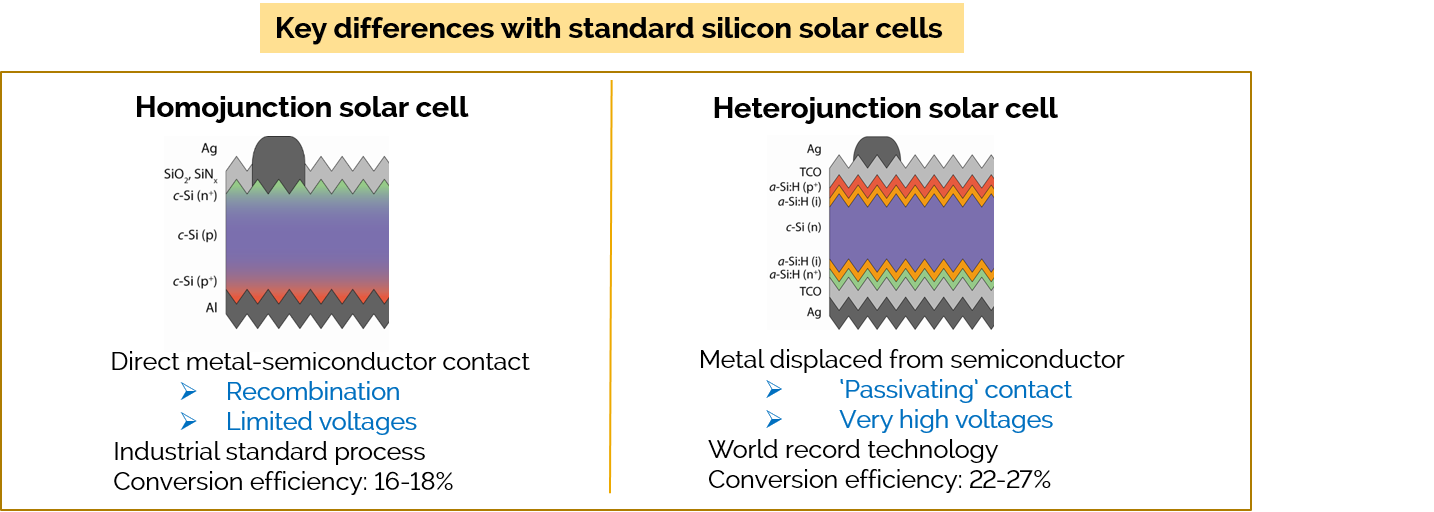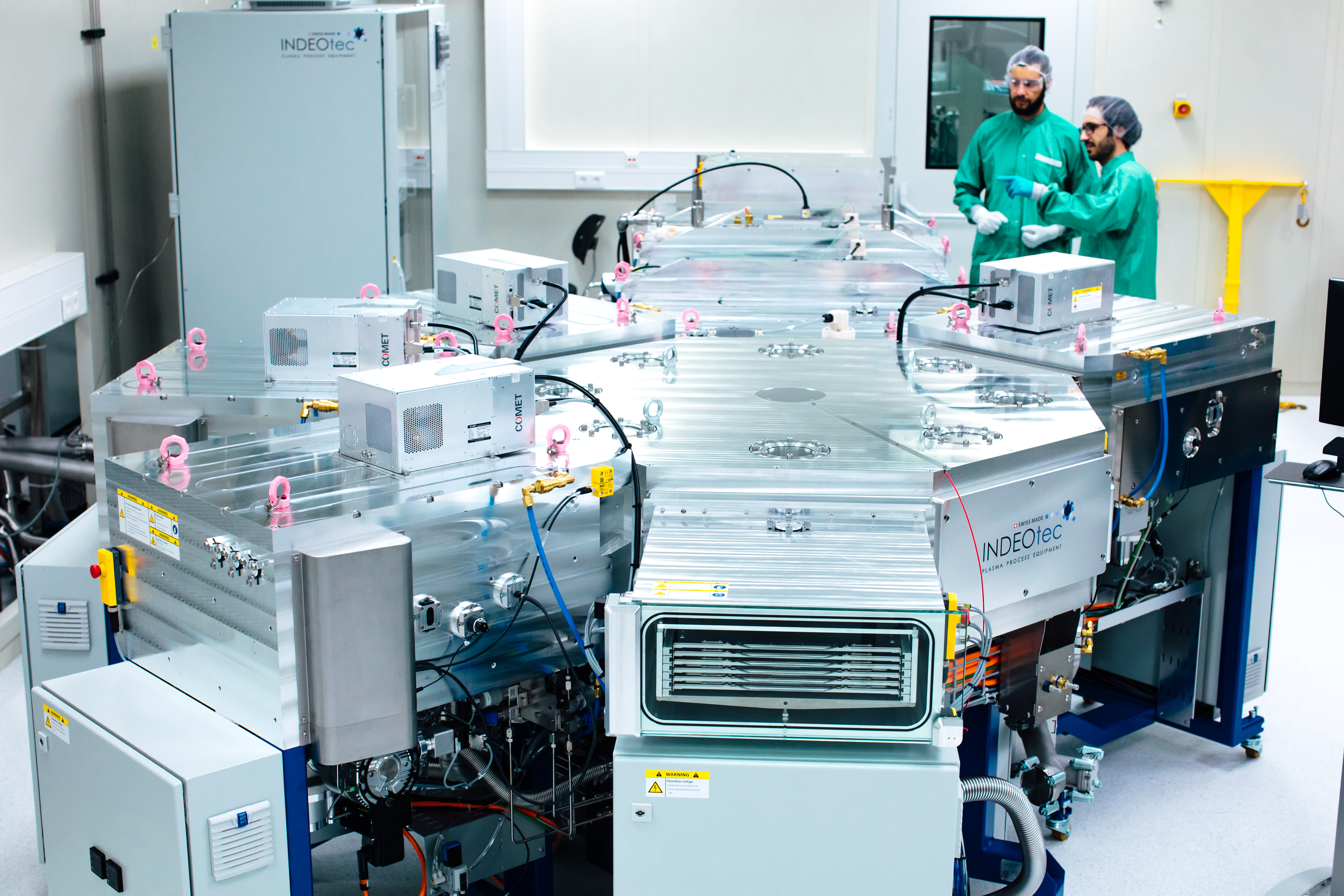

Research Details
One of the main research activities of the KPV-LAB is the development of high-efficiency solar cells, based on silicon wafers.

At KPV-LAB we focus on the following topics for the transparent contact development:

Our major aim is improving the performance of the photovoltaic devices by better temperature tolerance and light management. For this, we focus on the following topics.

Schematic illustration of the back-contacted (left) and bifacial SHJ (right) (Reference: T. G. Allen, J. Bullock, X. Yang, A. Javey, S. De Wolf, Nature Energy 2019.)
The Octopus II system is the latest product generation of the OCTOPUS equipment portfolio. The OCTOPUS II combines a couple of all-new, impressive and proprietary reactor and system design developments such as the IRFE technology for exceptional stable plasma conditions, the Mirror reactor concept for the top and bottom deposition or the potential combination of the PECVD and PVD deposition mode in one system without any interruption of the process sequence.

Indeotec OCTOPUS II PECVD-PVD cluster
Related Publications
This study, which takes place Advanced Materials Interfaces reports metallic lithium contact, applied to crystalline silicon solar cell and proved to be an excellent electron-selective, hole-blocking transport layer with an efficiency of 19%.
This study, which came out in Joule, reveals that once the PCE approaches a practical upper limit, work on the control and mitigation of the module temperature can be equally or even more significant than costly marginal gains in PCE.
Areej's in situ plasma approach offers excellent thickness control and superior structural integrity upon thermal annealing at 1000 °C. This study, which gives implied open‐circuit voltage exceeding 700 mV published in Advanced Materials Interfaces.
This study, which develops a strategy to circumvent the problem of boron diffusion into the silicon, took place in the recent issue of Advanced Materials Interfaces. This study is the first publication KPV-LAB in the field of poly‐Si passivating contact solar cells.
This study, published in Joule, reports 23.9%-efficient 6-in silicon heterojunction solar cells with improved damp-heat-stability for aiming the mass production.
This study presents that polyethyleneimine (b-PEI), which is Lewis base polymer, performs as an efficient electron transport layer for c-Si solar cells.
A comprehensive review covering the passivating contacts for silicon solar cells.
With this study, for the first time in literature Tantalum Nitride has been used as passivating contact on silicon solar cells.
Related People